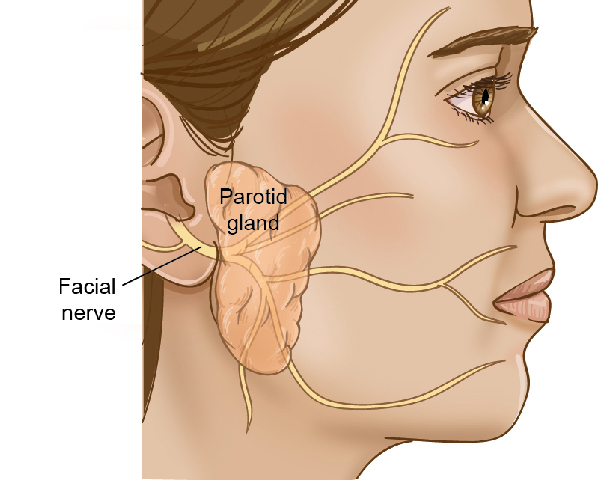
Parotid Surgery
Parotid Surgery is known as Parotidectomy. It involves removing all or part of the parotid gland. There are two parotid glands in the body. They are located high in the neck just below the ears. Parotid glands are major & the largest of the salivary glands. Parotidectomy involves surgical excision of the parotid gland. It is typically performed for removal of tumors which are either benign or malignant.
Types of Parotid Surgery
The following three types of surgery are the most commonly performed procedures of parotid surgery.- Superficial Parotidectomy – Parotid gland is divided into a superficial & deep lobe by the facial nerve which runs through the middle of the gland. Superficial parotidectomy which is the most common type of parotid surgery involves removal of superficial parotid gland to the plane of the facial nerve. This less than complete superficial parotidectomy which is able to remove the entire tumor with negative margin is also referred to as partial parotidectomy.
- Total Parotidectomy – This involves removal of the entire parotid gland including both, the superficial & deep lobe. In case the facial nerve is not involved, total parotidectomy is required to identify all the branches & carefully separate them & retract as performing a meticulous dissection.
- Radical Parotidectomy – This is in fact a total parotidectomy procedure along with resection of the facial nerve as well. Extended radical parotidectomy will additionally involve removal of the other structures as well like the temporal bone and/or skin overlying the parotid gland.
Preparing for Parotid Surgery
Patients should not be eating or drinking anything after midnight prior to the day of surgery. Inform the doctor if you are having cough, fever or any other signs of infection. You need to be evaluated & obtain a medical clearance from the doctor prior to undergoing general anesthesia for surgery. You are therefore required to arrive at the hospital a few hours prior to the scheduled time of operation in order to undergo a safe & secure operation.
Parotid Surgery Procedure
During parotid surgery the surgeon may choose to use a special monitor which makes a noise when a facial nerve is stimulated. Parotid surgery is performed through an incision which is made just in front of the ear within a skin crease extending down into a skin crease in neck region. Surgeons can thereby hide as much of the scar within the natural skin crease without directly making an incision in the middle of face.
A different additional approach is required when tumor is in the deep lobe of parotid gland. Deep lobe tumors can be approached from the neck & in some rare cases also through the mouth.
The surgeon will temporarily place a small drain out of skin at the end of the procedure. This will drain away any fluid or blood which accumulates in the space where the operation was performed. This drain will be removed by the surgical team after a few days. Drain removing procedure is simple & takes just a few seconds of time. There will be a little discomfort which will go away quickly.
You will be discharged from hospital the same day. You will be able to eat & drink soon after surgery. Doctors may also prescribe you pain medications as there is little pain associated with parotidectomy. Since we have several salivary glands to maintain a steady flow of saliva you will not experience dry mouth following removal of just one parotid gland. Most patients are up & out of bed the same day or by the next day.
Parotid Surgery Recovery & Aftercare
Recovery following parotid surgery will depend upon the extent of additional surgery & reconstruction. However, patients undergoing parotidectomy are able to go back home the same day. It will take a few days for drains to be removed. Additional cosmetic or re-construction procedures are planned after that. This is to give you time for recovery from initial surgery & getting the pathology results. Following this you can make appropriate arrangements for future procedures.
